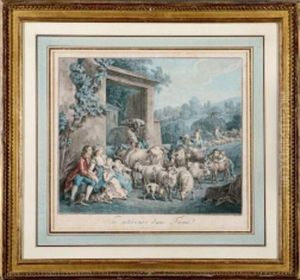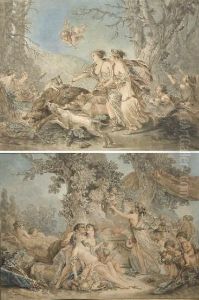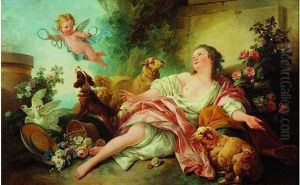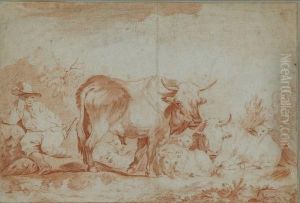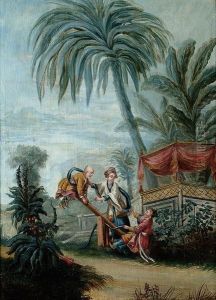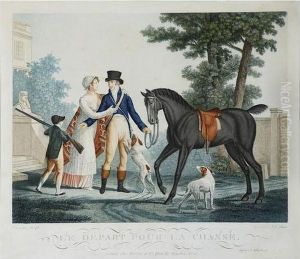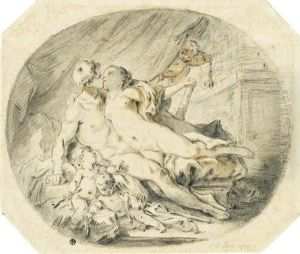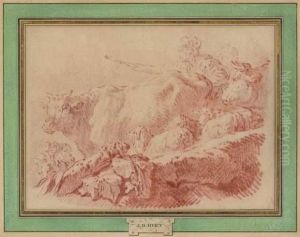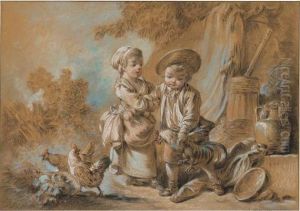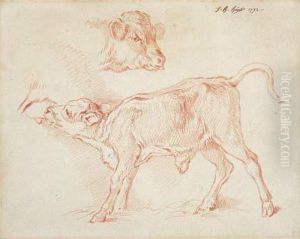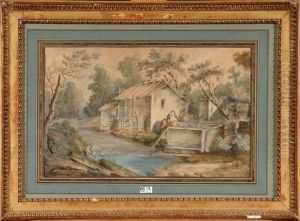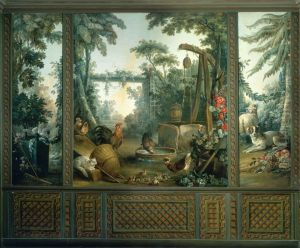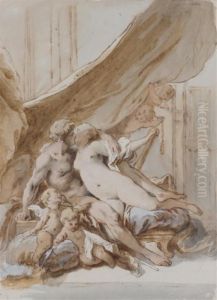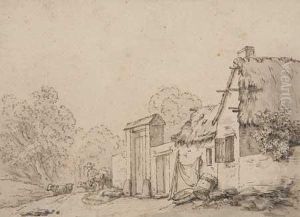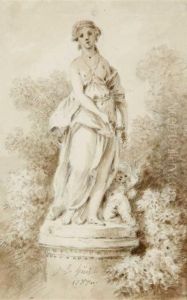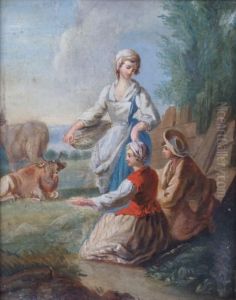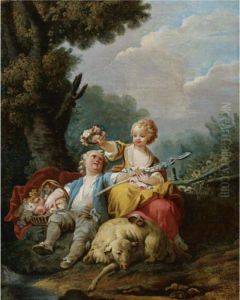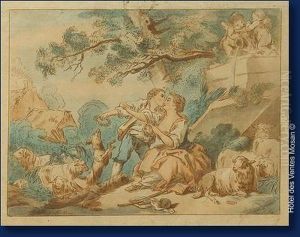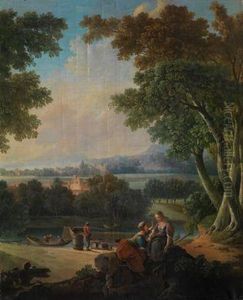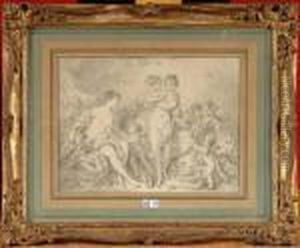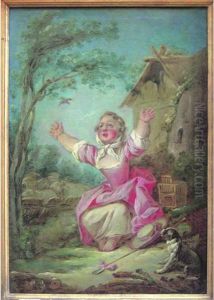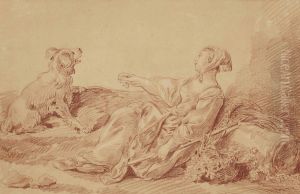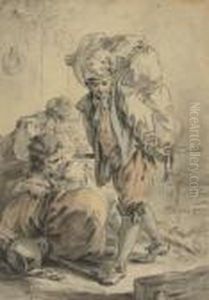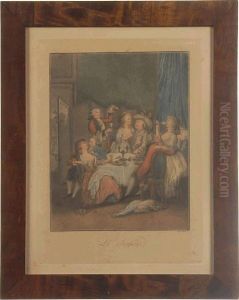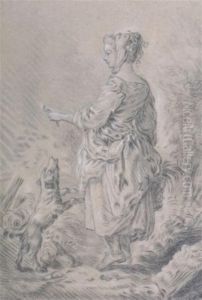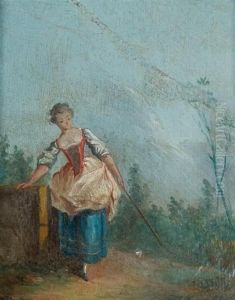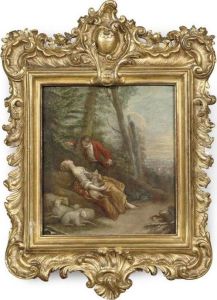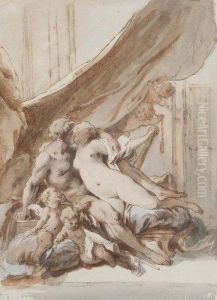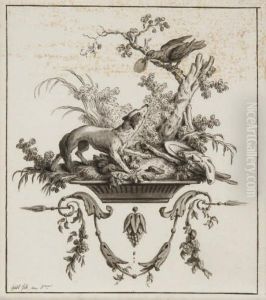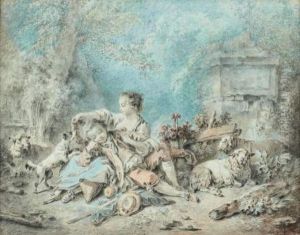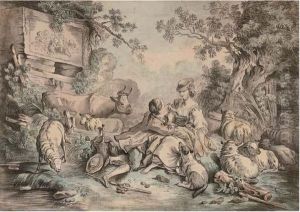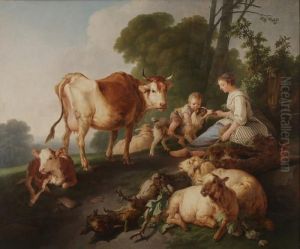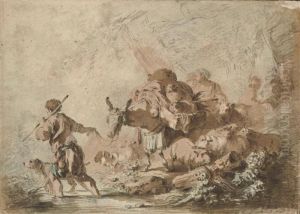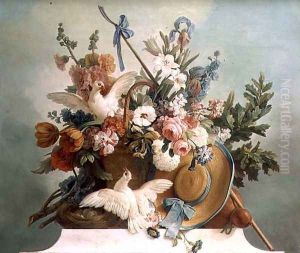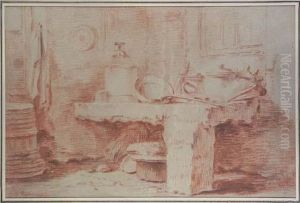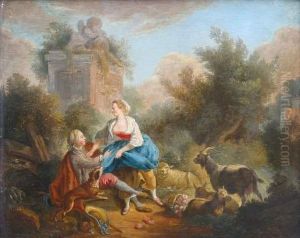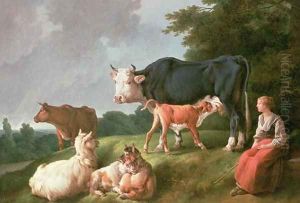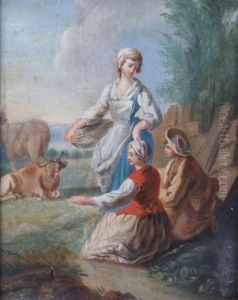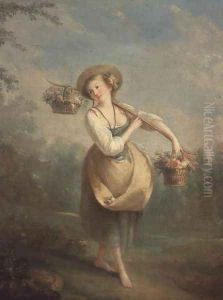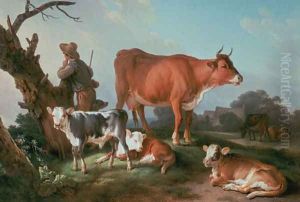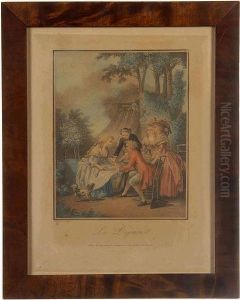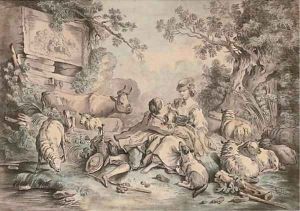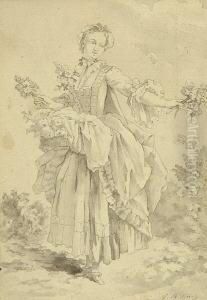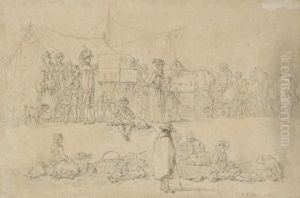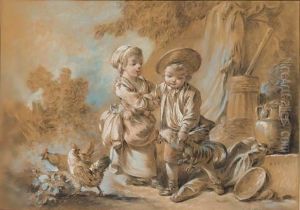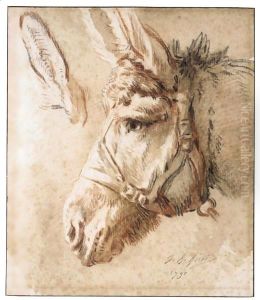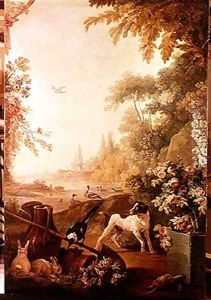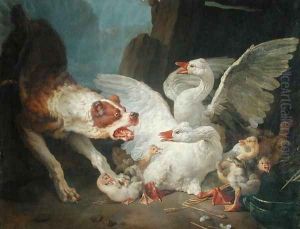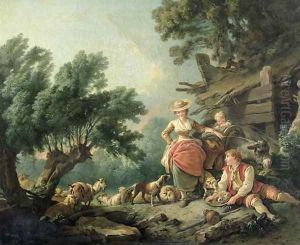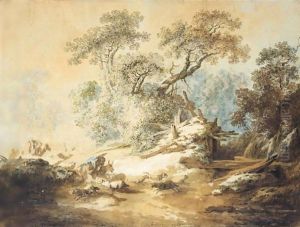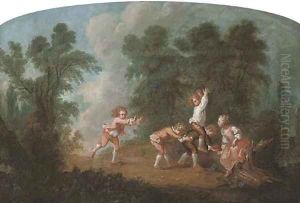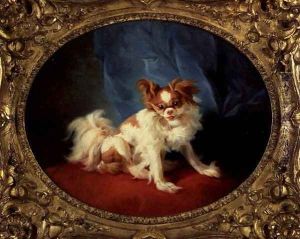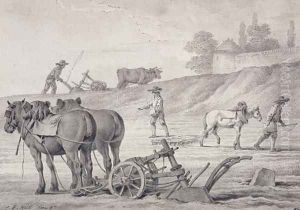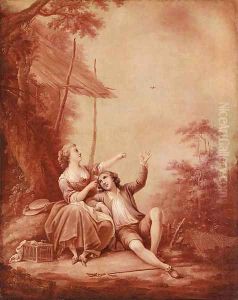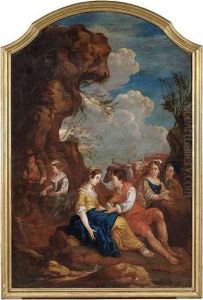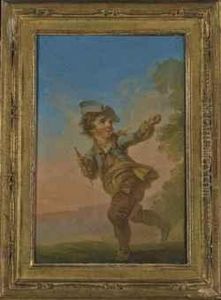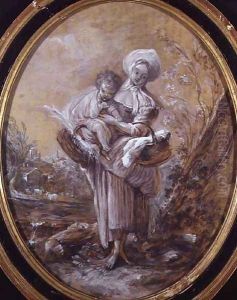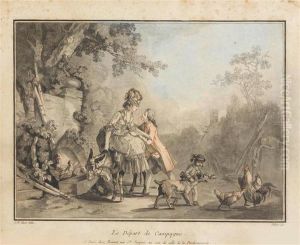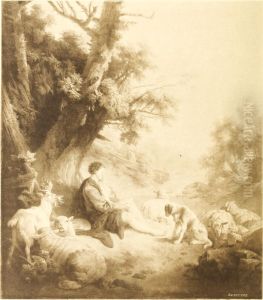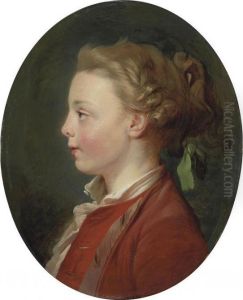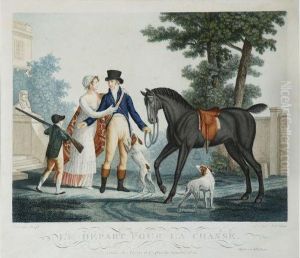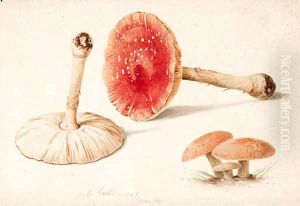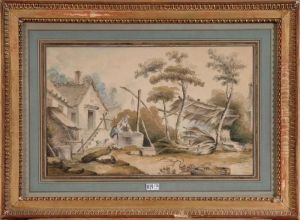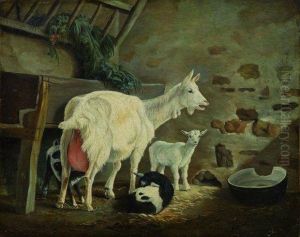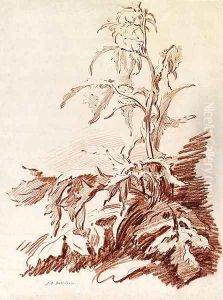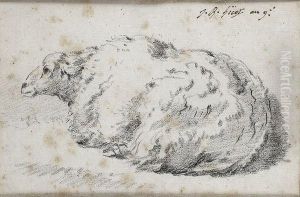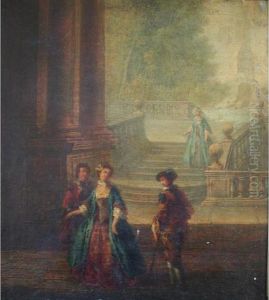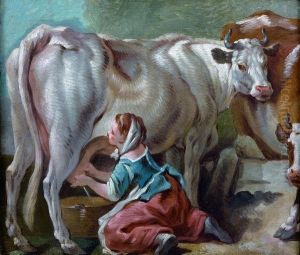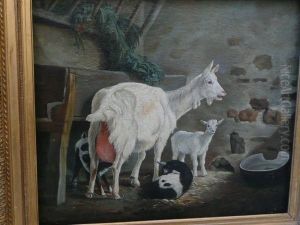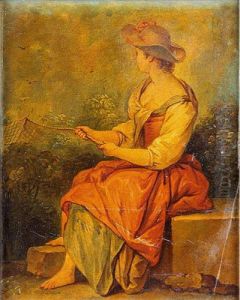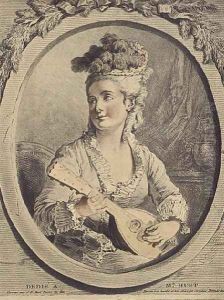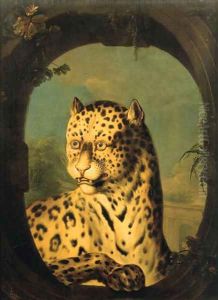Jean-Baptiste Huet Paintings
Jean-Baptiste Huet was a French painter and designer, known for his pastoral and genre scenes that encapsulated the idyllic atmosphere of the French countryside. He was born on October 15, 1745, in Paris, France. Huet was part of a family of artists; his father, Nicolas Huet, and his uncle, Christophe Huet, were also accomplished painters. He received his initial training from his uncle and later from the renowned French painter Jean-Baptiste Le Prince.
Huet quickly became known for his talent in depicting animals, particularly sheep, which would become a hallmark of his work. His skill led to an affiliation with the famous Beauvais tapestry workshop where he produced designs that were highly sought after. He was also involved with the Gobelins Manufactory, which was the most prestigious tapestry producer in France.
In addition to tapestries, Huet worked on a variety of mediums including oil paintings, watercolors, and drawings. He became a member of the Académie Royale de Peinture et de Sculpture in 1769, which was a significant recognition of his artistic talents. His work was characterized by a light touch, delicate coloring, and the pleasant, often bucolic subject matter.
Huet's art became emblematic of the Rococo style, which was popular in the late 18th century. His pastoral scenes often featured amiable shepherds, lush landscapes, and playful animals, all of which were depicted with a sense of harmony and peace. This style of painting was particularly popular with the French aristocracy of the time, who were his main patrons.
During the French Revolution, the demand for Huet's style of work declined, as the Rococo style became associated with the excesses of the old regime. Despite this, Huet continued to paint and receive commissions from patrons who appreciated his work. He passed away on June 27, 1811, in Paris, leaving behind a legacy of being one of the most prominent pastoral painters of his time.
Throughout his career, Jean-Baptiste Huet's work was celebrated for its charm and the skill with which he portrayed the simplicity and beauty of rural life. His contributions to the field of tapestry design are particularly noteworthy, as they exemplify the fusion of fine art with decorative art that was a hallmark of the period.
